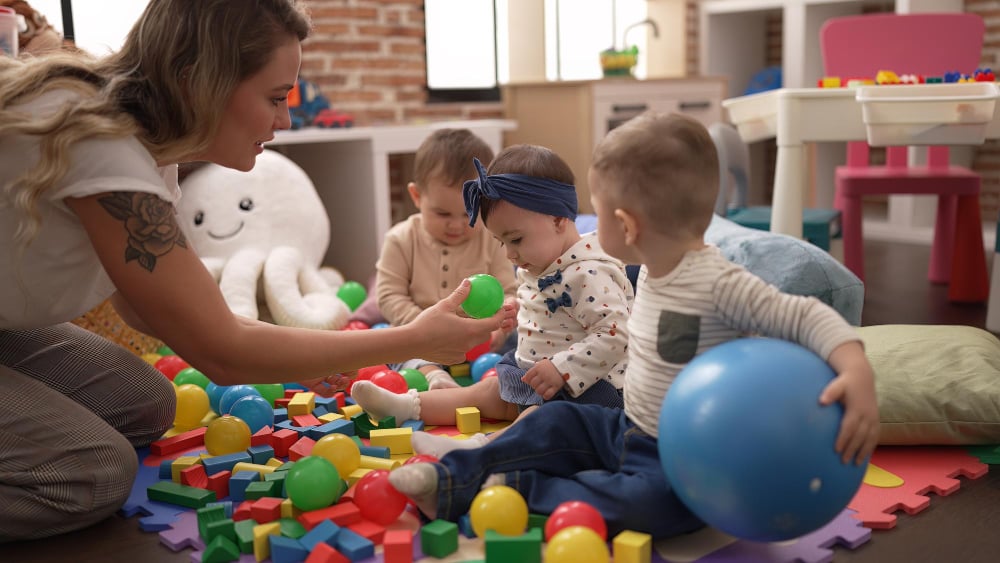Creating a Positive Learning Environment

Effective Classroom Management in Early Childhood Education: Creating a Positive Learning Environment
Classroom management in #early-childhood-education is a crucial skill that goes far beyond maintaining order. It's about creating a positive, nurturing environment where young children feel #safe, valued, and eager to learn. Effective #classroom management sets the stage for successful learning experiences and helps children develop essential social and emotional skills. Let's explore key strategies and principles for managing an #early-childhood classroom.
Establishing Clear Routines and Expectations
Young children thrive on consistency and predictability. Establishing clear routines and expectations from the start helps children feel secure and understand what's expected of them. This includes:
- Creating a visual daily schedule
- Setting clear, age-appropriate rules
- Consistently reinforcing positive behaviors
- Using transition songs or cues to move between activities
Designing an Engaging Physical Environment
The physical layout of the classroom plays a significant role in management. A well-designed early childhood classroom should:
- Have clearly defined learning centers
- Ensure materials are accessible and organized
- Include cozy spaces for quiet activities
- Allow for easy supervision of all areas
Implementing Positive Behavior Guidance
Positive behavior guidance focuses on teaching children appropriate behaviors rather than punishing negative ones. This approach includes:
- Using positive reinforcement and specific praise
- Redirecting undesirable behavior
- Teaching problem-solving skills
- Modeling the behavior you want to see
Fostering Emotional Intelligence
Helping children understand and manage their emotions is key to effective classroom management. Strategies include:
- Labeling and discussing emotions
- Teaching calming techniques (e.g., deep breathing)
- Using social stories to illustrate emotional scenarios
- Providing a "calm down" corner for self-regulation
Building Strong Relationships
Positive #teacher-child relationships are the foundation of effective classroom management. Focus on:
- Greeting each child by name daily
- Showing genuine interest in children's lives
- Practicing active listening
- Responding sensitively to children's needs
Utilizing Developmentally Appropriate Practices
Understanding child #development is crucial for effective management. Ensure that:
- Activities are age-appropriate and engaging
- Expectations align with #developmental capabilities
- There's a balance between structured and #free-play activities
- Individual differences in development are accommodated
Encouraging Peer Interactions
Promoting positive peer interactions helps create a harmonious #classroom-environment:
- Teach and model social skills
- Facilitate cooperative play
- Use buddy systems for activities
- Address conflicts as learning opportunities
Maintaining Effective Communication with Families
Partnering with families reinforces classroom management strategies:
- Share classroom rules and expectations with families
- Provide regular updates on children's behavior and progress
- Seek input from families on effective strategies
- Ensure consistent approaches between #home and school
Using Proactive Strategies
Preventing challenging behaviors is easier than addressing them after they occur:
- Plan smooth transitions between activities
- Provide warnings before changes in routine
- Offer choices to give children a sense of control
- Be aware of and responsive to individual children's needs
Implementing Effective Group Management Techniques
Managing a group of young children requires specific strategies:
- Use attention-grabbing techniques (e.g., songs, finger plays)
- Break into smaller groups for activities when possible
- Use non-verbal cues to redirect individual children
- Maintain an appropriate pace to keep children engaged
Continuous Reflection and Adaptation
Effective classroom management is an ongoing process:
- Regularly assess the effectiveness of your strategies
- Be willing to adapt approaches based on children's needs
- Seek professional development opportunities
- Collaborate with colleagues to share ideas and strategies
Conclusion
Effective classroom management in early childhood education is a multifaceted approach that requires patience, creativity, and a deep understanding of child development. By implementing these strategies, #early-childhood- #educators can create a positive, nurturing environment where young children can thrive socially, emotionally, and academically.
Remember, the goal of classroom management isn't just to maintain order, but to create a joyful, engaging space where children feel valued, safe, and excited to learn. With consistent effort and a positive approach, educators can build a #classroom-community that supports each child's #growth-and-development.
#developmentally
#early-childhood-educators
- Supporting Social Learning: Creating Classrooms that Care
- CDA: Creating the Outdoor Classroom
- Classroom Management is Collaboration!
- Classroom Positivity
- Creating the Natural Outdoor Classroom
- Moving About the Classroom: Effective Transitions for Everyday
- Spicing Up the Classroom: Learning Centers
- 1,2,3, Eyes on Me: Classroom Safety
- A Guide to Effective Communication
- Beautiful Junk: Using Recycled Materials in the Classroom
- Creating a Positive Learning Environment
- Creating the Montessori Prepared Environment: A Cornerstone of Learning
- Creating a Positive and Calm Classroom Environment
- Essential Training for Preschool Teachers: Building a Safe and Nurturing Learning Environment
- Creating "A Better Space for All": Enhancing Your Classroom Environment
- Creating Safe and Nurturing Environments in Child Care Settings
- Nurturing Learning Beyond Walls with "Creating the Natural Outdoor Classroom"
- Creating an Environment Of Wellbeing
- Creating Safe Outdoor Play Environments for Children: Understanding Hazards and Precautions
- Monthly Classroom Maintenance Checklist: Ensuring a Safe and Conducive Learning Environment
- Creating a Safe Environment for Children in Childcare Centers
- Special Needs Daycare: How to Create an Inclusive Environment
- How to Create an Inclusive Childcare Environment: Embracing Diversity and Culture
- Childhood Education in Georgia: A Growing Focus on Quality Learning
- Creating a Peaceful Retreat: The Power of a Calming Corner
- How Does Child-led Learning Elevate Winter Play?
- Integrate Technology in a Way that Supports Learning without Overwhelming
- Montessori Mistletoe: How to Create a Holiday-Themed Classroom Using Montessori Principles
- Nature’s Classroom: Why Fall Is the Best Season for Sensory Learning Outdoors
- Aug 30th is National Toasted Marshmallow Day: Creative Learning Fun with Toasted Marshmallows